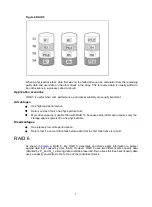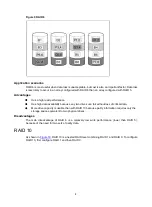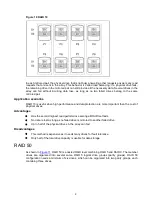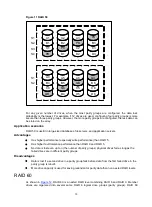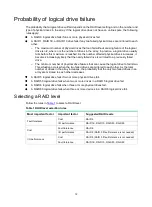
4
Fault tolerance methods
RAID 0
RAID 0 does not support fault tolerance. As shown in
, RAID 0 configuration provides data
striping, but there is no protection against data loss when a drive fails.
Figure 5 RAID 0
Application scenarios
RAID 0 is useful for rapid storage of large amounts of noncritical data (for printing or image editing,
for example) or when cost is the most important consideration.
Advantages
•
Has the highest write performance among all RAID methods.
•
Has the lowest cost per unit of stored data among all RAID methods.
•
All drive capacity is used to store data (none needed for fault tolerance).
Disadvantages
•
All data on the logical drive is lost if a physical drive fails.
•
Cannot use an online spare.
•
Can only preserve data by backing it up to external drives.
RAID 1
RAID 1 is also called drive mirroring. As shown in
, P1 and P2 represent two physical drives,
and they form a logical drive. Each data block is duplicated to a second drive and saved on two
drives.
Содержание UniServer E3200 G3
Страница 35: ...19 Figure 29 Selecting the RAID volume to be deleted...
Страница 116: ...56 Figure 96 Controller Configuration screen...
Страница 220: ...61 Figure 109 Selecting Main Menu 2 Select Controller Management and press Enter...
Страница 243: ...84 Figure 153 Confirming the operation...
Страница 293: ...50 Figure 89 Clearing completion...
Страница 382: ...21 Figure 27 Storage controller information...
Страница 389: ...7 Figure 8 Identifying a storage controller 2...


















